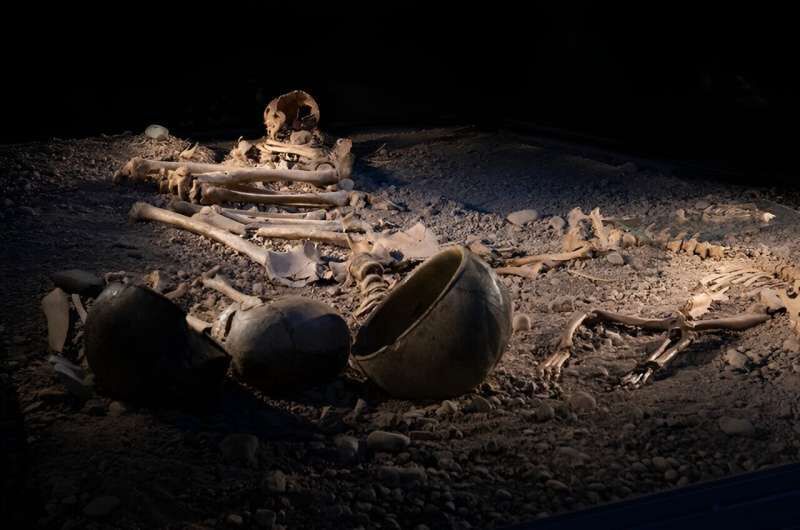People living close together and not having access to antibiotics sounds like a nightmare. Yet, this is how we spent much of our history and prehistory.
Comment: It's possible that in the past some societies, at particular periods, had that knowledge, and utilised it: Bacteria found in soil at ancient sacred site in Ireland halts growth of superbugs
A new international study coordinated from the Center for Paleogenetics in Stockholm explores microbes during the Stone Age in Scandinavia.
Two different types of microbes are described, both the kind of microbes that are expected in a healthy person, but also several that must have caused pain and problems. Neisseria meningitidis spreads through close contact between humans — for example when kissing. Yersinia entrecolitica is often picked up from contaminated food and water, and Salmonella enterica is a common cause of today's food poisonings.
"Especially the case of Salmonella enterica shows us how difficult it could be. In a Battle Axe culture burial, Bergsgraven in Linköping, we find two infected individuals, and it is actually possible that we are witnessing their cause of death," says Nora Bergfeldt at the Department of Zoology, Stockholm University who is conducting her research on bacterial diseases in prehistoric societies.
"This, and other bacterial diseases we have found among the individuals, are easily treated with antibiotics today, but back then they could be lethal."
Screening 38 individuals for microbes
In the study, 38 individuals from farmer contexts as well as from hunter-gatherer contexts have been screened for microbes. Materials from Hummerviksholmen in southern Norway (9,500 years old) to Bergsgraven in Linköping, Sweden (4,500 years old) were investigated.
Microbes such as bacteria, and some viruses, have their genetic material organized in DNA, just as we humans do. This is why such microbial DNA can be found in the remains of infected humans. It is this type of microbial DNA the scientists have used to trace bacterial diseases during the Scandinavian Stone Age. The transition from a hunter-gatherer lifestyle to a farming one is especially interesting, as it may be reflected in the bacterial diseases.
"We know when people turned to farming in Scandinavia but we still do not know how this change in lifestyle affected the general health," says Helena Malmström at the Human Evolution Program, Uppsala University. She has focused much of her research on the lifestyle transition during the Stone Age.
Comment: Other research has shown that the transition to agriculture resulted in a significant number of deleterious impacts on health from height to teeth: Why we have so many problems with our teeth
"The more people interacted more possibilities to infect one another occurred. But even if we do encounter bacteria with potential to impact societies such as Yersinia pestis, it is the infections that spread through food that is most prominent across the lifestyles in this study," says Anders Götherström, who is heading the research project in which this study was conducted. "It is amazing for us to be able to start to look into a part of prehistoric societies that has not been possible to research till now."
More information: Nora Bergfeldt et al, Identification of microbial pathogens in Neolithic Scandinavian humans, Scientific Reports (2024). DOI: 10.1038/s41598-024-56096-0
Journal information: Scientific Reports




Despite that, they seem to have created the most monumental structures discovered during our civilization on this world we live upon.
Nobody can explain the amount of manpower or technology involved. The bacterial infections seem to have occurred, during the procurement of grains as a food source, normally used for animals, because grazing was not available which was possibly a result of climate upheaval and drought.